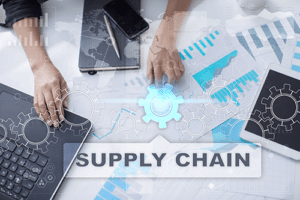 As many as 30% of employees worry that their jobs could be redundant. Are you paying too much to ensure your product gets to the customer on time? Are your products not getting to your customers on time?
As many as 30% of employees worry that their jobs could be redundant. Are you paying too much to ensure your product gets to the customer on time? Are your products not getting to your customers on time?
If so, then you need to assess your supply chain for redundancies and inefficiency. You could improve your bottom line by a third with some keen assessments and improvements to your lean supply chain management.
Are you wondering what is lean supply chain management? If so, then you’re in the right place because we’ve got you covered. Keep reading to learn everything you need to know about the lean chain.
What Does Lean Mean in Business?
The term lean has gained popularity in the business world these days. But it isn’t anything new. Toyota first implemented the theory of eliminating waste after World War II. Toyota engineers gave the world a great example of how to meticulously examine every phase in the manufacturing process.
The goal in lean is to reduce waste and increase efficiency. Over time the concept of a lean business has become a culture shift in which companies now put the customer first. They work to create the best product they can and then deliver that quickly and seamlessly to the client.
Gone are the days of mass manufacturing and storing thousands of products that won’t ship to the customer for weeks or months. Instead, companies are focusing on creating better products that can be delivered directly to the customers without sitting in a warehouse endlessly. There are several areas within the production process in which companies can make improvements and eliminate waste.
What Is a Lean Supply Chain?
These areas in which your company can pinpoint various places for improvement are called the supply chain. The supply chain is the production cycle your company follows to create the products you sell to your customers.
Functionally, the supply chain is simply getting the raw product to the manufacturer who then creates the final product and ships it to the customer. Along this entire route from product to delivery, your company can eliminate waste as it attains lean status. The four steps in the supply chain are:
1. purchasing raw products from suppliers
2. manufacturing finished products
3. storing products before the sale
4. shipping the product to the client or wholesaler
These elements of the supply chain provide ample opportunities for your company to increase efficiency and decrease cost by eliminating waste.
What Is Lean Supply Chain Management?
Supply chain management is usually thought of as manufacturing physical products. But, it can relate to other various industries as well. If you create and sell anything to a customer, you can benefit from examining your workflow processes.
This examination will enable you to then determine the areas that can be improved for efficiency. Take the time to study your work process, don’t skip this step as it is vital to show you where your company can improve.
A well-designed and organized supply chain allow you to deliver a quality product to your customer quickly. This will increase your sales while also decreasing your costs.
Each of the four areas listed above can be optimized to eliminate waste, reduce costs, and improve your bottom line.
How Can You Improve Your Business Productivity by Going Lean?
To accomplish a lean supply chain requires constant management of the many elements and departments. You can cut waste at the supplier level by researching various contracts and analyzing the quality of each merchant.
You can also invest in a software program to determine your best cost value, or choose to work with a supplier that has an online catalog and purchasing system. Once you have the supplies your attention can shift to your manufacturing process. You need to improve your manufacturing workflow to ensure that your product is being produced at peak efficiency.
When it comes to your lean manufacturing supply process, speed is not the goal to attain lean productivity. Waste can come at the end as well if you’re continually sending back final goods with defects or poor quality. Increasing the quality of your products will also increase your customer satisfaction. This will result in more reorders. Now you will save money in the long run by not having to worry about onboarding as many new clients each month.
Storing and shipping the product from the manufacturer to the final destination gives you plenty of areas for improvement. You don’t want to create hundreds of items that will sit on the shelf waiting for delivery. Additionally, you don’t want to ship each item individually.
There is a delicate balance of creating enough products in each manufacturing batch to warrant the shipping costs. At the same time, you don’t want to create too large of a batch. This will require your business to invest in vast warehouses and inventory management costs.
These four areas of your supply chain can each benefit from going lean. Your company needs to analyze each segment of the manufacturing process. This will ensure that you’re running at full optimization.
Now Your Business Can Benefit From Going Lean
Once your workflow process is lean you will see the improved quality in your products, improved productivity from your teams, and improved customer satisfaction from receiving quality products on time.
Don’t wonder anymore about what is lean supply chain management. Now you have the information you need to improve your supply chain and decrease inefficiencies.
If you’re ready to tackle your warehouse and shipping logistics to improve your bottom line and decrease redundancies, then request your free quote today. We help business owners like you every day and we’re here to show you how you can benefit from going lean now.
